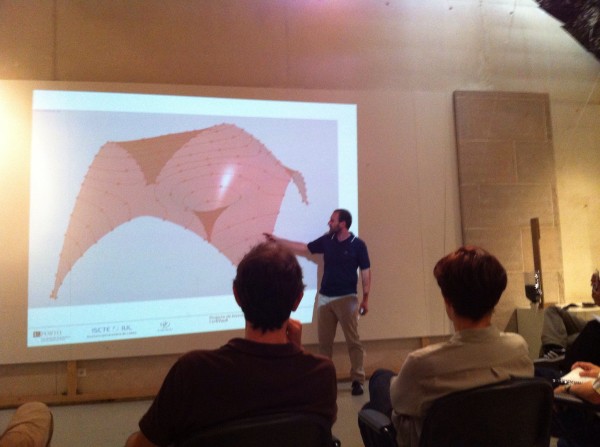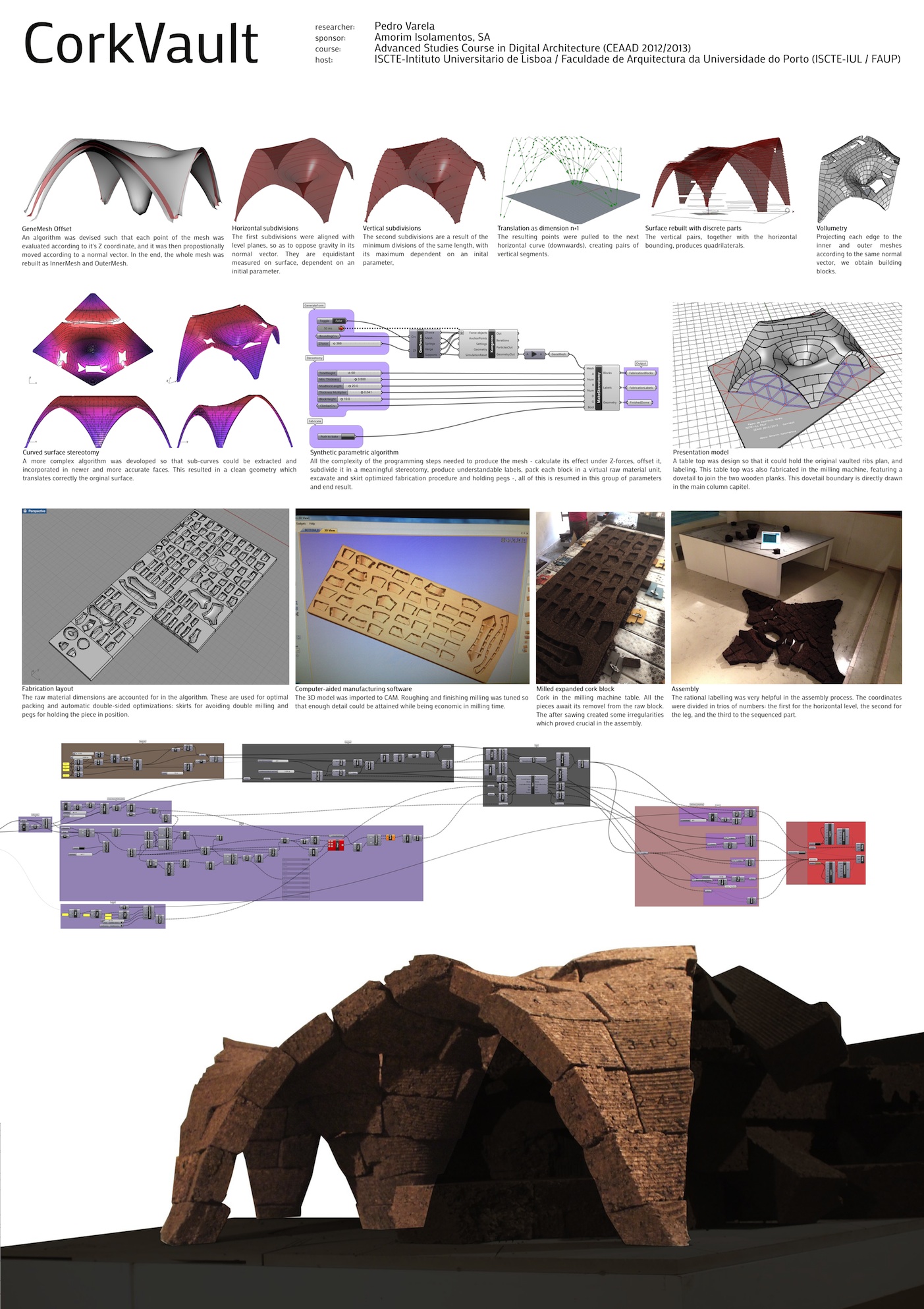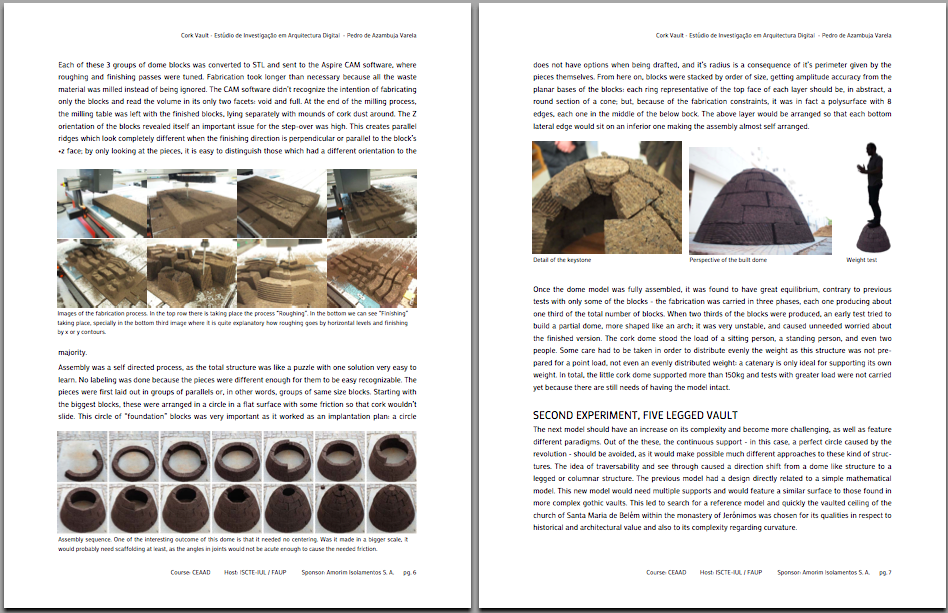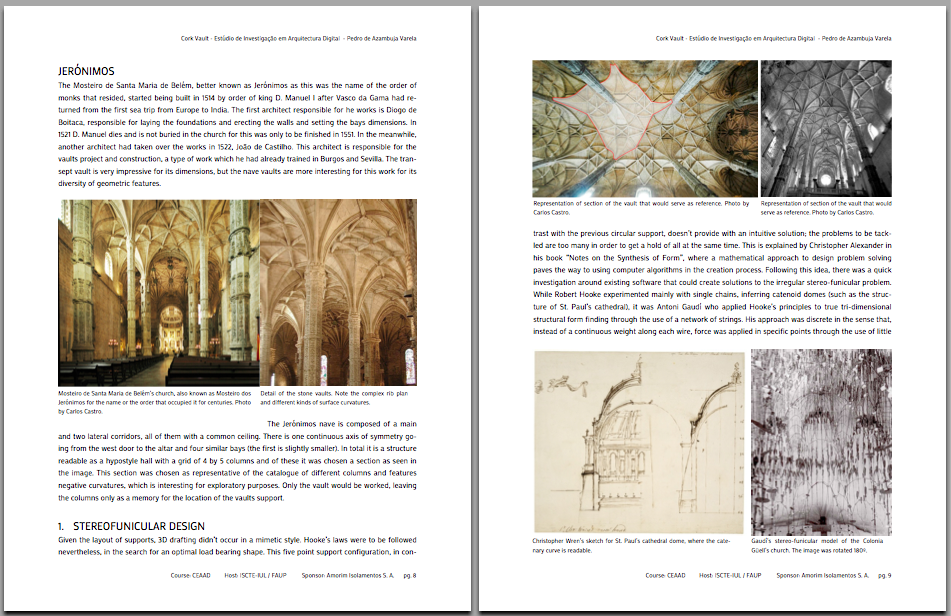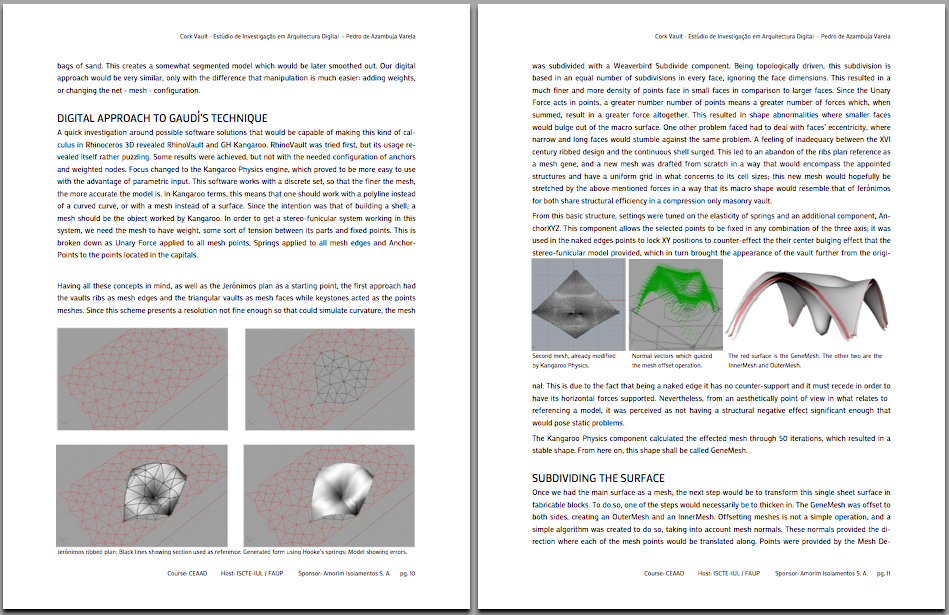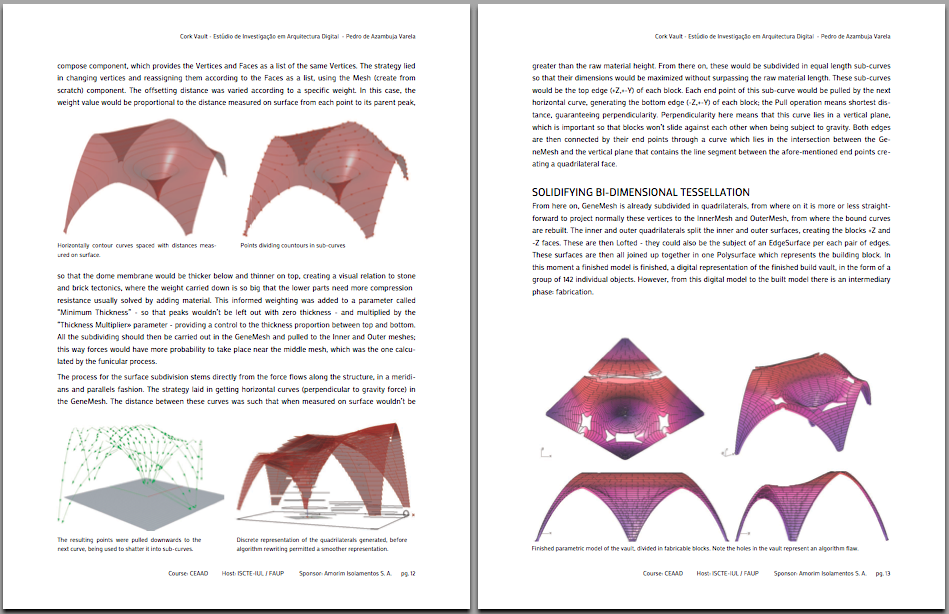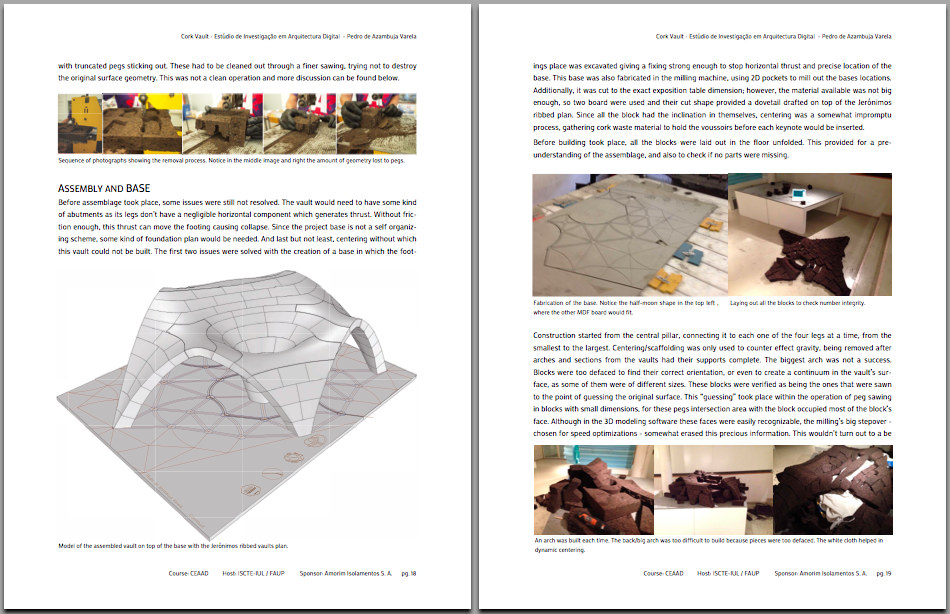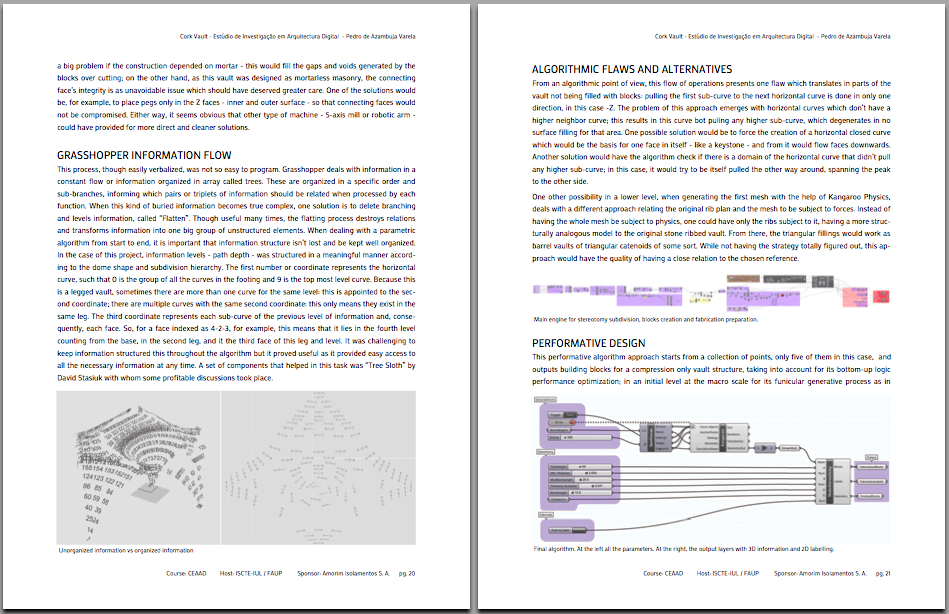This work was the result of my studies at CEAAD – Curso de Estudos Avançados em Arquitectura Digital – organized by ISCTE-IUL and FAUP, and hosted in ISCTE-IUL and VFABLAB in Lisbon in 2013-2013.
When approached with a raw material such as expanded cork agglomerate, materiality is a concept that is present from the very beginning. In this case, its plastic and compressive resistance properties were keys factor that sparked imagination around possibilities of new uses for this material in architecture. Vaults are one of the architectural elements that have always intrigued my mind, maybe because it connects so many different knowledge fields such as geometry, statics, physics, construction and architecture itself, in such a way that it is impossible to create such structures without a thorough knowledge in each and every one of these areas. Vaults also create a unique feeling inside a space which transports us to other realities, more embryonic in a biological and shelter sense. One other exploratory part of this work deals with the subdivi- sion of the vault surface because it can’t almost never be built out of one piece. Even in concrete shells, form-work belies a shape. This subdivision is a form of tessellation, one of the most loved geometry prob- lems of all time; the challenge here lies in the irregular doubly curved surface where this subdivision takes place, finding great help in the parametric approach. This takes us directly to algorithms and scripting, boosting possibilities in the control of pseudo-repeating elements, an ubiquitous factor in architecture production.
